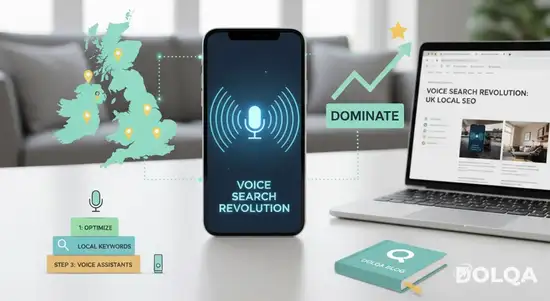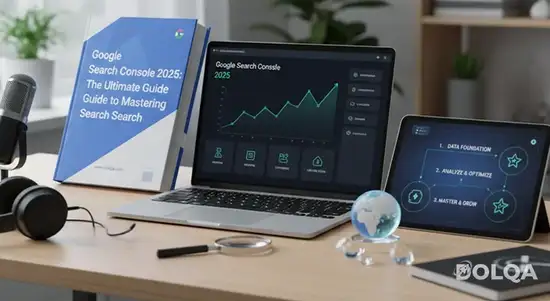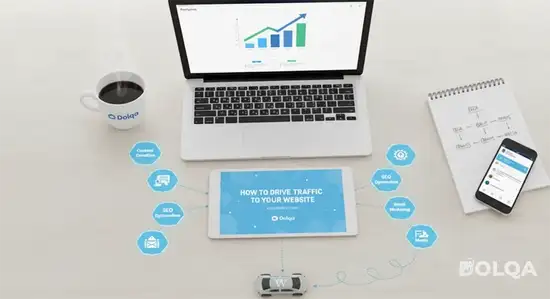Introduction: The Dawn of Conversational Commerce
Voice search is no longer a futuristic concept — it’s shaping how people interact with the digital world today. For UK businesses, this shift is redefining what local SEO truly means. With every “Hey Siri” or “OK Google,” users are searching faster, expecting more accurate results, and preferring conversational answers that sound natural.
💭 Take a moment to imagine your customer saying: “Find the nearest coffee shop open now.”
That single voice command could determine whether they discover your business or your competitor’s.
As voice search continues to dominate mobile behavior, understanding how it influences local SEO in the UK is no longer optional — it’s essential. In this guide, we’ll explore how voice queries, mobile voice search, and Google Business optimization are transforming the way local businesses reach and engage with nearby audiences.
By the end, you’ll have a step-by-step strategy to future-proof your brand for this conversational era — and position your business where your customers are truly listening.
Why Is Voice Search Transforming Local SEO in the UK?
Voice search fundamentally differs from traditional text-based queries because people speak differently than they type. When someone types, they might search "Italian restaurant Manchester." When speaking, they ask, "Where can I find authentic Italian food near me in Manchester?"
This conversational shift means local businesses must recalibrate their entire SEO voice queries approach. The mobile voice search phenomenon has grown exponentially, with predictions suggesting that by 2025, over 75% of UK households will own a smart speaker.
Key differences that matter:
- Voice queries are typically longer (3-5 words versus 7-10 words)
- They're question-based rather than keyword-based
- They demand immediate, location-specific answers
- They prioritise featured snippets and position zero results
Step 1: How Can You Optimise for Conversational Language?
Quick Answer: Transform your content to mirror natural speech patterns by incorporating complete questions and conversational phrases that match how people actually speak to voice assistants.
Your first strategic move involves understanding the linguistic nuances of spoken queries. Voice search users employ natural language—they ask questions as if speaking to a knowledgeable friend rather than a search engine.
Implement These Conversational Tactics:
- Research actual questions: Use tools like Answer the Public to identify common questions in your industry
- Create FAQ pages: Structure content around "who," "what," "where," "when," "why," and "how" questions
- Use long-tail keywords: Focus on phrases like "best family-friendly restaurant in Brighton" rather than just "restaurant Brighton"
- Write naturally: Your content should sound like human speech when read aloud
For local businesses, this means crafting content that anticipates the exact phrasing your customers use when speaking to Alexa, Siri, or Google Assistant.

Step 2: Why Is Google My Business Your Most Powerful Asset?
Quick Answer: Your Google My Business profile directly feeds voice assistant responses for local queries, making it the primary source for "near me" searches and location-based recommendations.
When someone asks their device for local recommendations, Google pulls information primarily from verified Google My Business listings. This makes your GMB profile the cornerstone of your local SEO UK strategy.
Optimise Your GMB Profile Completely:
- Claim and verify your listing immediately if you haven't already
- Complete every section with accurate, detailed information
- Select precise categories that match your services exactly
- Add high-quality photos regularly (businesses with photos receive 42% more requests for directions)
- Collect and respond to customer reviews consistently
- Post updates weekly about offers, events, and news
- Enable messaging to engage directly with potential customers
Your business description should incorporate natural language that mirrors how customers describe your services verbally. Instead of "We provide plumbing services," try "We're your local emergency plumber available 24/7 for burst pipes, boiler repairs, and bathroom installations."
Step 3: How Do You Structure Content for Featured Snippets?
Quick Answer: Format answers in concise paragraphs of 40-60 words, use bullet points for lists, and structure content with clear headings that directly answer common questions.
Voice assistants predominantly read from featured snippets—those coveted "position zero" results at the top of search pages. Securing these spots dramatically increases your visibility for SEO voice queries.
Featured Snippet Optimisation Techniques:
Use the question-answer format: Place the question as your heading and provide a direct, succinct answer in the following paragraph.
Create definition-style content: When explaining services or terms, offer clear, encyclopedic definitions in 40-60 word paragraphs.
Implement structured data: Use schema markup to help search engines understand your content's context and structure.
Format lists properly: Voice assistants love numbered steps and bulleted lists for process-oriented queries.
Step 4: What Role Does Mobile Optimisation Play?
Quick Answer: Since 95% of voice searches occur on mobile devices, your website must load quickly, display perfectly on smartphones, and provide seamless mobile user experiences.
Mobile voice search dominates the voice search landscape because users typically engage with voice assistants while on the move—commuting, driving, or walking through city centres.
Essential Mobile Optimisation Elements:
- Page speed: Aim for loading times under three seconds
- Responsive design: Ensure your site adapts flawlessly to all screen sizes
- Click-to-call buttons: Make it effortless for users to contact you immediately
- Location services: Enable easy access to directions and maps
- Simplified navigation: Reduce clicks needed to reach important information
Google's mobile-first indexing means your mobile site performance directly impacts your overall search rankings, making this step non-negotiable for local businesses serious about voice search success.
Step 5: How Can You Leverage Local Keywords Effectively?
Quick Answer: Incorporate neighbourhood names, local landmarks, and regional phrases naturally throughout your content to capture hyper-local voice searches specific to your area.
Voice search users often include specific location identifiers when seeking local businesses. They don't just search for "dentist"—they ask for "dentist near Richmond Park" or "emergency dentist in Kensington."
Local Keyword Strategy:
- Identify micro-locations: Include neighbourhood names, postal codes, and nearby landmarks
- Create location-specific pages: Develop dedicated pages for each area you serve
- Use local dialect: Incorporate regional terms and phrases authentic to your area
- Reference local events: Connect your services to community happenings and seasonal activities
For instance, a London café might optimise for "best brunch spot near Brick Lane Market" or "where can I get artisan coffee in Shoreditch?"
Step 6: Why Are Customer Reviews Critical for Voice Search?
Quick Answer: Voice assistants prioritise businesses with strong review profiles and high ratings, often citing review content verbatim when recommending local establishments to users.
The voice search algorithm places significant weight on social proof. When someone asks for "the best florist in Cardiff," voice assistants consider review quantity, quality, and recency as primary ranking factors.
Build Your Review Strategy:
- Request reviews systematically after positive customer interactions
- Make reviewing easy by providing direct links via email or SMS
- Respond to all reviews (positive and negative) professionally and promptly
- Encourage detailed reviews that mention specific services or products
- Monitor multiple platforms including Google, Facebook, and industry-specific sites
Reviews containing natural language descriptions of your services also contribute valuable conversational content that matches voice search patterns.
Step 7: How Does Schema Markup Enhance Voice Search Visibility?
Quick Answer: Schema markup provides search engines with structured data about your business, helping voice assistants accurately interpret and present your information in spoken responses.
While schema markup might sound technical, it's essentially code that helps search engines understand your content's meaning rather than just reading words on a page.
Implement These Schema Types:
- LocalBusiness schema: Defines your business type, location, and contact information
- FAQ schema: Highlights question-answer pairs for direct voice responses
- Review schema: Showcases ratings and testimonials
- Product schema: Details specific offerings with prices and availability
- Event schema: Promotes upcoming activities and special occasions
You can implement schema manually or use plugins like Yoast SEO or Schema Pro. Google's Structured Data Testing Tool helps verify your markup is correctly configured.
Step 8: What Content Types Perform Best for Voice Search?
Quick Answer: Conversational blog posts, comprehensive FAQs, how-to guides, and local area guides consistently capture voice search traffic by directly answering specific user questions.
Content strategy for voice search differs markedly from traditional SEO approaches. You're not just targeting keywords—you're answering specific questions your potential customers are asking aloud.
High-Performing Content Formats:
Local guides: "Complete Guide to Vegan Dining in Bristol" or "Family Activities in Edinburgh: A Local's Perspective"
Problem-solving articles: "What to Do When Your Boiler Breaks Down in Winter" or "How to Choose the Right Solicitor for Conveyancing"
Comparison content: "Independent Coffee Shops vs Chain Cafés: What's Better?" or "Traditional vs Modern Kitchen Designs"
Seasonal content: "Preparing Your Garden for Spring in Yorkshire" or "Winter Wedding Venues in the Cotswolds"
Each piece should target specific long-tail SEO voice queries while providing genuine value that establishes your expertise and trustworthiness.
Step 9: How Do You Track Voice Search Performance?
Quick Answer: Monitor position zero rankings, featured snippet appearances, branded search volume increases, and organic traffic from long-tail conversational queries to measure voice search success.
Measuring voice search impact requires looking beyond traditional metrics because voice interactions don't always generate the same analytics footprints as text searches.
Key Performance Indicators:
- Featured snippet tracking: Use tools like SEMrush or Ahrefs to monitor your featured snippet presence
- Long-tail query traffic: Analyse Google Search Console for increases in question-based queries
- "Near me" searches: Track location-based query volume and rankings
- Direct traffic spikes: Monitor correlation between GMB interactions and website visits
- Phone call tracking: Implement call tracking numbers to attribute voice-driven calls
Remember that voice search success often manifests as offline conversions—foot traffic and phone calls—rather than just website visits.
Step 10: What Future Trends Should UK Businesses Anticipate?
Quick Answer: Expect increasing multilingual voice searches, visual-voice search combinations, voice commerce transactions, and hyper-personalised local recommendations based on user behaviour patterns.
The voice search landscape continues evolving rapidly, and forward-thinking local businesses must stay ahead of emerging trends.
Prepare for These Developments:
Visual voice search: Users increasingly combine voice commands with image recognition—"Show me shoes like these in nearby shops"
Voice commerce: "Order my usual from the local curry house" will become standard transactional queries
Multimodal interactions: Smart displays will present visual results alongside spoken answers, requiring rich media optimisation
Privacy-first personalisation: Voice assistants will offer more relevant local recommendations while respecting data protection preferences
Community-driven answers: User-generated content and local forums will influence voice search results more significantly
Staying competitive means continuously adapting your local SEO UK strategy to accommodate these technological advances
Conclusion: Your Voice-First Future Starts Today
The transformation brought by voice search isn't a distant possibility—it's reshaping how local businesses attract customers right now. Every day you delay implementing these strategies, you risk losing ground to competitors who've already embraced this conversational revolution.
The beauty of voice search optimisation lies in its alignment with fundamental good business practices: providing clear information, maintaining accurate business details, delivering exceptional customer experiences, and genuinely helping people solve their problems.
Begin with the foundational steps—optimise your Google My Business profile, structure content around natural questions, and ensure your website performs flawlessly on mobile devices. As you gain confidence, layer in more sophisticated techniques like schema markup and advanced content strategies.
The UK market's embrace of voice technology shows no signs of slowing. Your local business deserves to be the answer customers hear when they ask for recommendations. Take the first step today, and position yourself at the forefront of this voice-driven future.
What will you optimise first—your GMB profile or your mobile experience? The choice is yours, but the moment to act is now.
Sources and References
Google Search Central Documentation - Official guidelines on structured data and local business optimisation
Ofcom Communications Market Report 2024 - UK statistics on smart speaker and voice assistant adoption
BrightLocal Local Consumer Review Survey - Data on consumer behaviour and review importance for local search
Think with Google UK - Mobile search behaviour and consumer insights
Schema.org - Structured data vocabulary and implementation guidance
Google My Business Help Centre - Official guidance on optimising business profiles







Comments (0)
Leave a Comment
No comments yet. Be the first to comment!